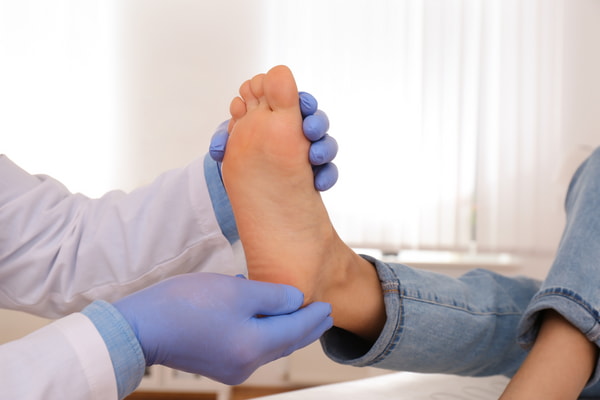Zapatos descalzos minimalistas (barefoot shoes) y salud de los pies: un estudio de la rigidez del arco
El pie humano es una estructura notable y compleja que ha evolucionado durante miles de años para brindar estabilidad, equilibrio y movilidad. En los últimos años, la creciente tendencia de los zapatos descalzos ha dado lugar a un creciente cuerpo de investigación sobre las ventajas y desventajas de este tipo de calzado. Este artículo resume un estudio reciente que investigó los efectos del calzado moderno y el calzado minimalista en la biomecánica del pie humano. El estudio, que comparó la rigidez del arco de las personas que habitualmente usan calzado mínimo con aquellos que habitualmente usan zapatos modernos convencionales, encontró que las personas que usan calzado mínimo tienen arcos más rígidos tanto estática como dinámicamente. Los investigadores plantearon la hipótesis de que los zapatos modernos reducen el papel de los músculos del pie en el mantenimiento de la rigidez del arco, lo que puede provocar el colapso del arco y el pie plano en algunas personas. Por el contrario, los músculos del pie relativamente pequeños en personas con calzado convencional podrían estar relacionados con las características de sus zapatos que inmovilizan y protegen el pie, como puntera restrictiva y soportes elevados para el arco. Si bien estos hallazgos son intrigantes, los investigadores advierten que se necesita más investigación para confirmar la causalidad entre el calzado y la biomecánica del pie. La investigación futura debería centrarse en otros músculos del pie que se cree que están involucrados en el mantenimiento de la rigidez del arco, controlar los posibles factores de confusión, como la ascendencia genética y los niveles de actividad física, y determinar los efectos de las características específicas de los zapatos modernos en la biomecánica del pie. Además, se necesita más trabajo para determinar cómo el uso de zapatos modernos afecta la función del pie en diferentes etapas de desarrollo. A pesar de las limitaciones del estudio, los hallazgos respaldan la idea de que el pie humano no está completamente adaptado para los zapatos "convencionales" modernos y que el calzado descalzo o minimalista puede ser más beneficioso para la salud del pie. Si bien el uso de zapatos modernos en una etapa temprana de la vida puede aumentar el riesgo de pie plano, el uso de calzado mínimo más adelante en la vida puede ayudar a tratar los síntomas del pie plano al fortalecer los músculos del pie. En conclusión, el estudio proporciona más evidencia de la importancia de la biomecánica del pie y el impacto del calzado en la salud del pie. Si bien se necesita más investigación para comprender completamente la relación entre el calzado y la biomecánica del pie, los hallazgos de este estudio sugieren que el calzado descalzo o minimalista puede ser una opción más saludable para mantener la salud del pie y prevenir problemas en los pies. Citations: Holowka, N.B., Wallace, I.J. & Lieberman, D.E. Foot strength and stiffness are related to footwear use in a comparison of minimally- vs. conventionally-shod populations. Sci Rep 8, 3679 (2018). https://doi.org/10.1038/s41598-018-21916-7[vc_row][vc_column][vc_column_text]
Barefoot Shoes and Foot Health: A Study of Arch Stiffness
The human foot is a remarkable and complex structure that has evolved over thousands of years to provide stability, balance, and mobility. In recent years, the growing trend of barefoot shoes has led to a growing body of research into the benefits and drawbacks of this type of footwear. This article summarizes a recent study that investigated the effects of modern shoes and minimal footwear on the biomechanics of the human foot.
The study, which compared the arch stiffness of individuals who habitually wear minimal footwear to those who habitually wear conventional modern shoes, found that individuals who wear minimal footwear have stiffer arches both statically and dynamically. The researchers hypothesized that modern shoes reduce the role of foot muscles in maintaining arch stiffness, which can lead to arch collapse and flat foot in some individuals. In contrast, the relatively small foot muscles in conventionally-shod individuals could be related to features in their shoes that immobilize and protect the foot, such as restrictive toe boxes and raised arch supports.
While these findings are intriguing, the researchers caution that more research is needed to confirm the causality between footwear and foot biomechanics. Future research should target other foot muscles thought to be involved in maintaining arch stiffness, control for potential confounding factors such as genetic ancestry and physical activity levels, and determine the effects of specific features of modern shoes on foot biomechanics. Additionally, further work is needed to determine how the use of modern shoes affects foot function at different stages of development.
Despite the limitations of the study, the findings support the idea that the human foot is not entirely adapted for modern "conventional" shoes and that barefoot or minimal footwear may be more beneficial for foot health. While the use of modern shoes early in life may increase the risk of flat foot, the use of minimal footwear later in life may help treat the symptoms of flat foot by strengthening the foot muscles.
In conclusion, the study provides further evidence of the importance of foot biomechanics and the impact of footwear on foot health. While more research is needed to fully understand the relationship between footwear and foot biomechanics, the findings of this study suggest that barefoot or minimal footwear may be a healthier option for maintaining foot health and preventing foot problems.
Citations:
Holowka, N.B., Wallace, I.J. & Lieberman, D.E. Foot strength and stiffness are related to footwear use in a comparison of minimally- vs. conventionally-shod populations. Sci Rep 8, 3679 (2018). https://doi.org/10.1038/s41598-018-21916-7
[/vc_column_text][/vc_column][/vc_row]

